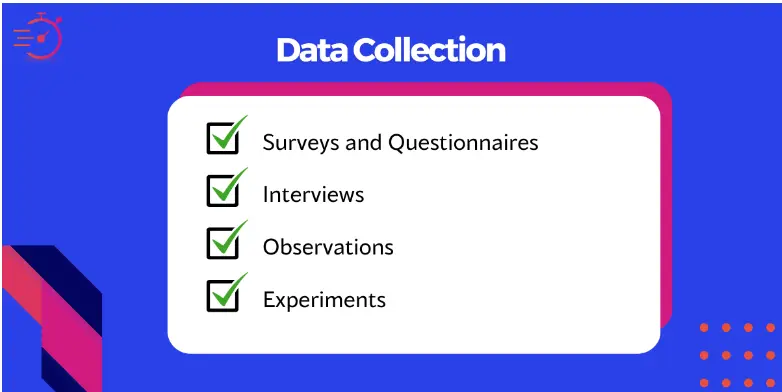When it comes to studying, making decisions, and taking action based on what we know, data is the most important thing. Without data, organizations would be in the middle of a sea of uncertainty with no way to find their way. This makes primary data collection tools an important part of shaping results and making decisions.
In this in-depth piece, we’ll learn a lot about primary data collection, including what it is, how it’s done, examples from the real world, and how important it is for organizations and researchers.
Understanding Primary Data Collection:
What is Primary Data?
At its core, primary data is made up of information that was gathered directly from the source. It comes from surveys, interviews, observations, and focus groups, among other things, and is specific to the study question at hand. In contrast, secondary data is taken by someone other than the user and is often available for other researchers to use.
Why Collect Primary Data?
Gathering primary data is a planned process that is made to fit the goals of a researcher or organization. It gives you some control over the data collection process and makes sure that the information you get fits with your study goals. This ability to be changed is very important in areas like market research, the social sciences, and healthcare, where small details and specifics matter a lot.
Methods of Primary Data Collection:
1. Surveys and Questionnaires:
One of the most common ways to get first-hand information is through surveys. They involve asking people a set of questions that have already been thought out in order to find out their views, preferences, feedback, or facts. There are many ways to do a survey, including online survey tools, emails, paper forms, and face-to-face meetings. Researchers can reach a large number of people quickly and easily, which improves the breadth and depth of the data they collect.
2. Interviews:
When compared to surveys, interviews offer a deeper level of engagement. Researchers talk to people directly and ask them open-ended questions to get rich and useful information. Interviews can be done in person, over the phone, or even through video calling. This method is very helpful when looking into complicated topics and getting people’s thoughts in their own words. It gives a more detailed understanding than just looking at numbers might.
3. Observations:
Observations are the systematic studies of subjects in their natural surroundings to learn about their actions, behaviors, and relationships with other things. Researchers can choose between overt observations, in which the people being watched know they are being watched, and secret observations, in which the people being watched don’t know they are being watched. This method is used in many different fields, such as ethnographic research, psychology, anthropology, and more. It gives the data gathered more context and authenticity.
4. Focus Groups:
Focus groups bring together a small group of participants who engage in facilitated discussions around a specific topic. Guided by a skilled moderator, participants share their opinions, experiences, and ideas, leading to dynamic conversations and the exploration of diverse viewpoints. Focus groups are particularly effective for understanding group dynamics, shared experiences, and the underlying motivations that might not surface in individual interviews.
5. Experiments:
In an experiment, variables are changed in a controlled setting so that the link between causes and effects can be studied. Quantitative data is often associated with experiments, but adding qualitative data can give a more complete picture of how participants felt and what they thought, making the conclusions made from the experiment’s results stronger.
6. Case Studies:
Case studies involve an in-depth examination of a single individual, group, organization, or event. This method is particularly useful for understanding complex scenarios, gaining a holistic understanding of a subject, and exploring intricate details that might be overlooked in broader research methods.
If your business is already registered on udyog aadhar (MSME) and you need to move, you may do it here. UPDATE UDYOG AADHAR TO UDYAM may be found here.
Examples of Primary Data Collection:
1. Market Research:
Imagine that a business is getting ready to put a new offering on the market. By doing polls, they can get first-hand information about not only what customers want and need, but also how much they are willing to pay. This information becomes the foundation for designing a product that meets the exact needs of the target group, which leads to more success on the market.
2. Healthcare Studies:
In the realm of medical research, a scientist seeking to understand the impact of a newly developed drug on patients’ quality of life may conduct in-depth interviews with patients who are using the medication. Through qualitative data collection, the researcher gains insights into patients’ experiences, side effects, and overall satisfaction, helping improve medical interventions.
3. Social Sciences:
Consider a sociologist studying the effects of social media on teenagers’ self-esteem. To unravel the intricate dynamics, the researcher may employ focus groups to facilitate discussions among teenagers. These discussions unveil teenagers’ thoughts, emotions, and experiences in relation to their social media interactions, providing a nuanced understanding of the phenomenon.
4. Consumer Behavior Analysis:
Retail companies often seek to optimize store layouts to enhance customer experiences. By employing observational methods, they can track how customers navigate through the store, which sections they spend the most time in, and their buying behaviors. This data informs strategic store design improvements that enhance customer satisfaction and sales.
5. Educational Research:
In the domain of education, a researcher aiming to evaluate the effectiveness of a novel teaching method can design experiments. One group of students experiences the new method, while another group follows the traditional approach. The researcher collects and analyzes data on students’ performance, attitudes, and feedback to draw conclusions about the method’s impact on learning outcomes.
Your UDYAM registration certificate may be downloaded and printed here. UDYAM REGISTRATION CERTIFICATE PRINT
Importance of Primary Data Collection:
Primary data collection offers a range of advantages that significantly contribute to its profound significance:
Reliability:
Researchers maintain direct control over the data collection process, ensuring accuracy, consistency, and quality in the data gathered, thereby enhancing the credibility of their findings.
Relevance:
Primary data is meticulously customized to align with research objectives, guaranteeing its direct applicability to the study at hand. This relevance translates to actionable insights that can drive effective decision-making.
Specificity:
Researchers can fine-tune primary data collection methods to capture specific information that might be overlooked in secondary data sources. This level of detail enhances the precision and depth of the collected data.
Despite its numerous merits, primary data collection comes with its share of challenges:
Time-Intensive:
Planning, executing, and analyzing primary data collection efforts can be time-consuming, demanding meticulous attention to detail at every stage to ensure the data’s accuracy and meaningfulness.
Resource-Intensive:
Conducting surveys, interviews, or experiments demands resources, including personnel, technology, and logistical arrangements. Adequate allocation of resources is crucial for successful primary data collection.
Access Constraints:
Gaining access to certain populations or settings may pose logistical hurdles for primary data collection, necessitating creative solutions and careful planning.
Add Video- Link – https://www.youtube.com/watch?v=IcoAq0eG8BQ&t=3s
Conclusion:
Primary data collection is the most important part of research because it helps researchers and organizations find unique ideas that fit their needs. Primary data comes from things like surveys, interviews, observations, focus groups, and more. It helps organizations make smart choices, figure out complicated situations, and learn a lot about topics of interest. Even though the process may take a lot of time and money, the benefits of being reliable, relevant, and detailed make primary data collection an invaluable tool for learning and making good decisions.
Whether you are an academic researcher, a market analyst, or a healthcare worker, embracing primary data collection opens the door to a wealth of useful insights that drive progress, innovation, and success. In a world shaped by data, harnessing the power of original data collection is a way to open up transformative possibilities, encourage growth, and help different fields move forward. As data collection methods change, they make raw data even more important for making a more informed and dynamic future.
Follow us on Google News




